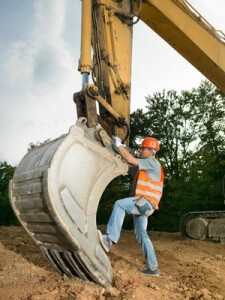“There are lots of people who mistake their imagination for their memory.” – Josh Billings
We all forget things. It is built into the very structural nature of the human brain. Human memory, just like a computer’s cache memory, is not limitless and has its bounds. Yet so many organizations’ approach to training relies on workers’ memories remaining forever intact.
They invest in formal training in the classroom and hands-on experience in the field or in a facility, training and certifying technicians for a certain set of service procedures, then assimilating them into the workforce.
 But what happens in a year or so, when the retention of those courses starts to fade – especially with procedures that are not part of routine maintenance and don’t get practiced at all?
But what happens in a year or so, when the retention of those courses starts to fade – especially with procedures that are not part of routine maintenance and don’t get practiced at all?
The consequences for not remembering a crucial aspect of a high-risk task can be devastatingly (or deadly). And workplace accidents always affect the bottom line – whether due to production stoppages, OSHA fines or lawsuits.
So why aren’t more Operations & Maintenance (O&M) managers focused on routine Refresher Training – especially around complex equipment and procedures – when the stakes are so high?
Assumptions, Time and Money
Part of the problem is that O&M managers don’t realize there’s a problem. The assumption is often that once training has been completed, those trainees are set for the duration – however long that may be. But this is rarely the case.
And with workers often cross-trained to cover multiple positions, they may not perform certain tasks regularly enough to remember the types of small details that – when missed – can have huge ramifications.
Not to mention that equipment and technology may have changed since the last time they performed that task.
But that’s not the only obstacle. Some O&M managers may recognize the need for periodic refresher training, but it’s difficult to find the time, especially if it means sparing equipment needed to be productive. There’s also the added expense of paying workers for something they should (theoretically) already know.
But here’s the thing: Refresher training can actually SAVE time. And money. And lives.
3D Interactive Simulation – The Superman of Refresher Training
The reason many O&M departments are resistant to refresher training is because they’re still thinking of training as being limited to four walls and a projector. But that’s no longer the case.
We have the technology now to offer 3D interactive simulation refresher training – which is even better than traditional training options. Here’s why:
1. Self-paced modules don’t require additional personnel acting as trainers, nor entire days devoted strictly to training because that’s when personnel/equipment is available
2. 3D interactive simulations mean no need to designate actual equipment to training, keeping you productive and eliminating equipment wear and tear during training
3. Going virtual means being able to train more people at one time, making it cost effective.
Just ask Oshkosh, Audi and the U.S. Navy – they’ve experienced all of the above as ROI of 3D interactive simulation training over traditional training.
Training That’s Available Anytime, Anywhere
Another huge benefit of virtual refresher training is that it can be deployed via portable mobile and tablet apps so technicians can visually walk themselves through procedures before getting on site – while riding the subway into work, or any other time/place they want. Talk about productive – and a great way to avoid human error.
Here is an example of a maintenance tech using refresher training on an iPad, visually re-learning a procedure:
But while making training “platform agnostic” is a great advantage, we also recognize that not every trainee is at the same level (think of someone who’s been at a company for 10 years versus two). That’s why at Heartwood, we are designing 3D Interactive Training Courses that are also Training Agnostic.
A version of the same classroom training is re-purposed as portable refresher training modules, designed to be absorbed on the move, anytime and anywhere, by every worker no matter the stage. They simply choose the module that is appropriate to where they are in their training.
For organizations worried about cost, 3D interactive simulation training with portable options is a game-changer when compared to the time and expense of annual refresher training using live equipment – especially if you have a large organization.
Refresher training is important to workers’ productivity, safety, and your bottom line. It should never be sacrificed because of money or shrugged off because it’s a hassle. When training is no longer a place you go to, but a thing you do – consistently and repetitively – you’ll never have to avoid it. And we make it easy enough to do every day.
Reach out here to discuss a training roadmap for your team.


